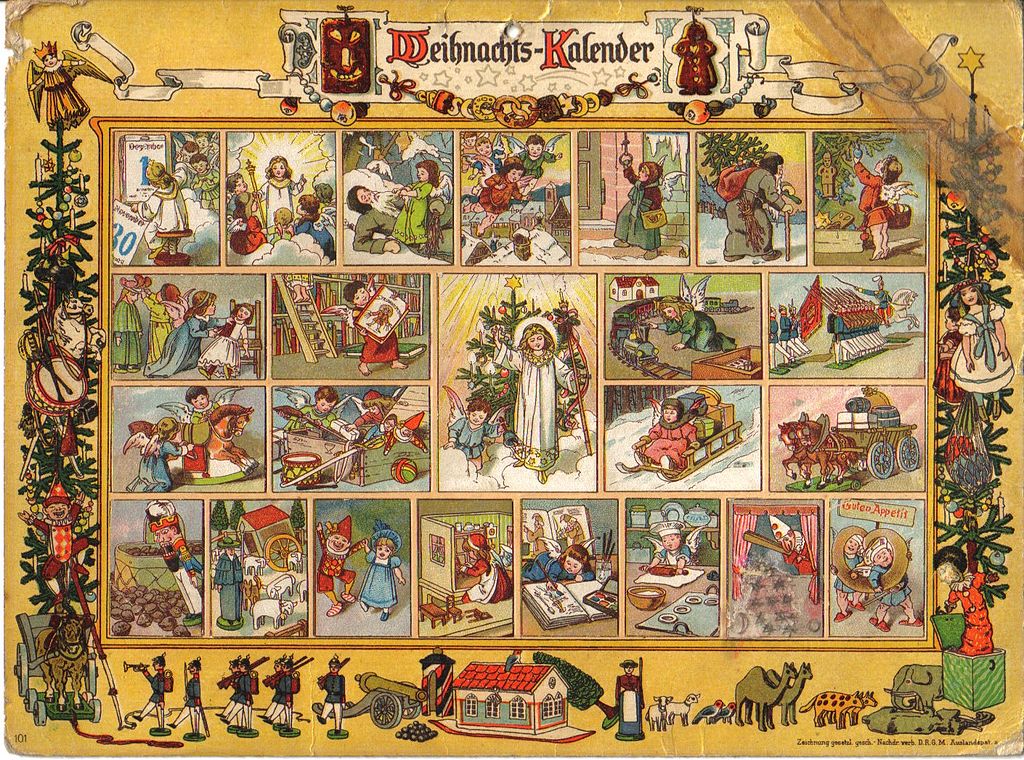
The tradition of counting down to Christmas with an Advent calendar is a cherished ritual for many, especially in Germany where it originated. This article explores the rich history of Advent calendars in Germany, tracing their evolution from simple chalk lines to the elaborate and diverse forms we see today. Understanding the origins and cultural significance of these calendars offers a deeper appreciation of this festive tradition.
The Origins of Advent in Christianity
Advent, a period of expectant waiting and preparation for the celebration of the Nativity of Jesus at Christmas, has its roots in Christian tradition. The term ‘Advent’ comes from the Latin word ‘adventus’, meaning ‘coming’ or ‘arrival’. Historically, this period has been observed since at least the 4th century and has evolved in practices and customs over time.
Early Forms of Advent Calendars in Germany
The specific tradition of the Advent calendar is believed to have originated in Germany in the 19th century. Early forms of marking the Advent period were diverse and straightforward. German Lutherans would make chalk marks on doors or light candles to count the days leading up to Christmas.
The First Printed Advent Calendars
The first known printed Advent calendar dates back to the early 1900s. Gerhard Lang is often credited with creating the first such calendar in the form of a cardboard calendar in the early 20th century in Germany. As a child, Lang’s mother made him a simple Advent calendar with 24 small sweets attached to cardboard, marking each day leading up to Christmas. Inspired by this, Lang, who worked in a printing company, produced what is believed to be the first commercial Advent calendar in the early 1900s.
Evolution and Diversity in Advent Calendar Designs
From these humble beginnings, Advent calendars quickly diversified in design and content. Early versions often featured pictures or Bible verses behind each door, while later versions included small gifts, chocolates, or other sweets. During the 20th century, the designs of these calendars became more elaborate, often featuring winter scenes, religious imagery, or themes from popular culture.
The Impact of World War II on Advent Calendar Production
World War II had a significant impact on the production of Advent calendars. The rationing of paper during the war led to a decrease in the production of these calendars. However, post-war, the tradition saw a resurgence, and Advent calendars became more popular than ever, spreading from Germany to other parts of Europe and North America.
Modern Advent Calendars
In contemporary times, Advent calendars have become a global phenomenon. They are no longer limited to Christian or religious themes but encompass a wide range of designs catering to different interests and age groups. Today, you can find Advent calendars filled with chocolates, toys, beauty products, and even gourmet food and wines.
Advent Calendars as a Cultural Export
Germany’s tradition of the Advent calendar has been one of the country’s most delightful cultural exports. The popularity of these calendars around the world speaks to the universal appeal of counting down to a festive occasion. They have become a significant part of Christmas celebrations in many countries, retaining their charm and appeal across generations.
The Role of Advent Calendars in German Christmas Markets
German Christmas markets, known for their festive atmosphere, also play a role in the tradition of Advent calendars. These markets often sell unique and handmade Advent calendars, offering a glimpse into the traditional craftsmanship and artistic diversity that characterizes German Advent calendars.
Advent Calendars and Family Traditions
In Germany, Advent calendars remain a central part of family Christmas traditions. The daily opening of a calendar door is an activity that brings families together in anticipation of Christmas. It’s a simple yet profound ritual that marks the passage of time and heightens the excitement for the upcoming holiday.
The history of Advent calendars in Germany is a fascinating journey from modest beginnings to a beloved global tradition. These calendars have evolved to meet the changing tastes and times, yet they remain anchored in the spirit of anticipation and joy that characterizes the Advent season. As we open each door of our Advent calendars, we partake in a centuries-old tradition that continues to enchant and bring joy to people around the world.
Related article:
Forgotten German Christmas Traditions That Deserve a Comeback
German Christmas Markets
Christmas Markets and Advent in Germany
